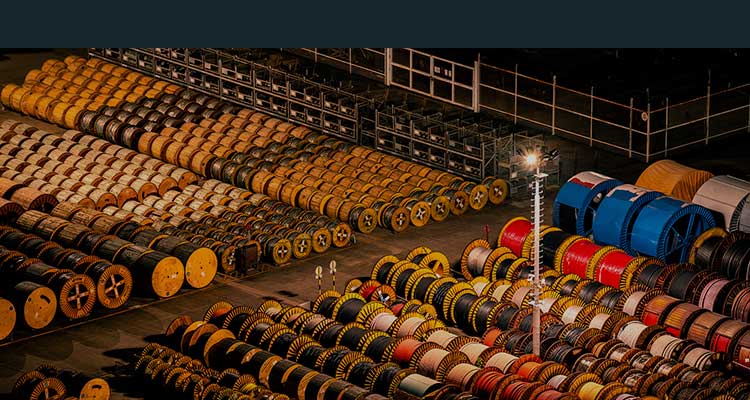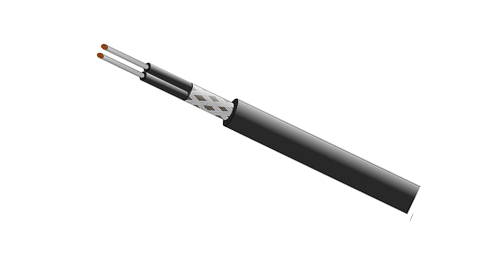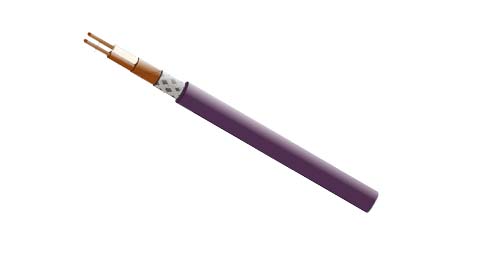Importance of IEC 60502-1 in Electrical Engineering
The International Electrotechnical Commission (IEC) is a global body that develops and publishes international standards for electrical, electronic, and related technologies. One of its critical contributions is the IEC 60502-1 standard, which specifies the requirements for power cables with extruded insulation and their accessories for rated voltages from 1 kV (Um = 1.2 kV) up to 3 kV (Um = 3.6 kV). Understanding this standard is vital for electrical engineers as it ensures the safety, reliability, and efficiency of electrical installations across various sectors. The standard's comprehensive framework addresses various aspects of cable design, construction, performance, and application, making it indispensable in modern electrical engineering.
Compliance with IEC 60502-1 is crucial for maintaining the integrity of electrical systems. Non-compliance can lead to severe consequences, including electrical failures, safety hazards like fires and electric shocks, and significant financial losses due to system downtime and repairs. By adhering to this standard, electrical engineers can mitigate these risks, ensuring that power cables perform reliably under different operational conditions. Moreover, IEC 60502-1 provides a common language and understanding for manufacturers, installers, and inspectors, facilitating better communication and consistency in electrical projects.
In addition to safety and reliability, adherence to IEC 60502-1 promotes innovation and technological advancement in the electrical industry. The standard encourages the development of new materials and designs that improve the performance and lifespan of power cables. By setting benchmarks for quality and performance, IEC 60502-1 drives continuous improvement and innovation, helping the industry keep pace with the growing demand for more efficient, durable, and sustainable electrical solutions. Ultimately, this standard plays a pivotal role in the advancement of electrical engineering, ensuring that power systems are safe, reliable, and capable of meeting future challenges.
Overview of Power Cables
Power cables are fundamental components of electrical systems, responsible for transmitting electrical energy from one point to another. They are used in a wide range of applications, from residential and commercial buildings to industrial facilities and power generation plants. The basic structure of a power cable includes conductors, insulation, and protective layers, each serving a specific purpose to ensure the efficient and safe transmission of electrical power. The design and construction of power cables are influenced by factors such as the voltage level, current capacity, environmental conditions, and installation requirements.
The conductors, typically made of copper or aluminum, are the core of the power cable, responsible for carrying the electrical current. The choice of conductor material and its cross-sectional area are critical factors that determine the cable's current-carrying capacity and electrical resistance. Insulation surrounds the conductors to prevent electrical leakage and protect against short circuits and other electrical faults. Common insulation materials include PVC (polyvinyl chloride), XLPE (cross-linked polyethylene), and EPR (ethylene propylene rubber), each offering different properties in terms of thermal stability, flexibility, and resistance to environmental factors.
Protective layers, such as metallic screens, armor, and outer sheaths, provide additional mechanical protection, electrical shielding, and environmental resistance. These layers are essential for ensuring the cable's durability and performance in challenging conditions, such as underground installations, exposure to chemicals, or high mechanical stress. The specific design and construction of a power cable depend on its intended application, with considerations for factors like voltage rating, installation environment, and regulatory requirements. Understanding these components and their functions is crucial for selecting the right power cable for a given application and ensuring its safe and reliable operation.
Key Specifications of IEC 60502-1
IEC 60502-1 provides detailed specifications for low voltage power cables, ensuring that they meet specific criteria for safety, performance, and durability. One of the key specifications is the rated voltage, which ranges from 1 kV to 3 kV. This rating defines the maximum voltage that the cable can safely handle, and it is crucial for ensuring that the cable can operate reliably under the electrical load it is designed for. The standard also specifies the construction requirements for various components of the cable, including conductors, insulation, and protective layers.
The conductors must be made of high-conductivity materials like copper or aluminum, and they must be designed to meet specific requirements for electrical resistance and mechanical strength. The standard provides guidelines for the conductor's cross-sectional area, stranding, and surface finish to ensure optimal performance and durability. Insulation materials must meet stringent requirements for dielectric strength, thermal stability, and resistance to environmental factors. The standard specifies the minimum thickness and other properties of the insulation to ensure that it can effectively prevent electrical leakage and withstand the operational conditions.
Protective layers, including metallic screens, armor, and outer sheaths, are designed to enhance the cable's mechanical protection and environmental resistance. The standard specifies the materials, thickness, and construction methods for these layers to ensure that the cable can withstand mechanical stress, chemical exposure, and other environmental factors. Additionally, IEC 60502-1 includes requirements for the cable's overall diameter, bending radius, and other physical properties to ensure that it can be installed and operated safely and efficiently. By adhering to these specifications, manufacturers and installers can ensure that power cables meet the highest standards of safety and performance.
Types of Power Cables Covered by IEC 60502-1
IEC 60502-1 covers a wide range of low voltage power cables, each designed for specific applications and operating conditions. One of the primary types of cables covered by this standard is single-core and multi-core cables with extruded insulation. These cables are commonly used in residential, commercial, and industrial installations for the distribution of electrical power. They are available in various configurations, including armoured and non-armoured versions, to meet different requirements for mechanical protection and environmental resistance.
Another important type of cable covered by IEC 60502-1 is the flexible power cable, which is designed for applications where the cable needs to be bent or flexed frequently. These cables are typically used in portable equipment, machinery, and other applications where flexibility and durability are essential. The standard specifies the construction and performance requirements for flexible power cables to ensure that they can withstand repeated bending and flexing without compromising their electrical and mechanical properties.
Specialty cables, such as fire-resistant and flame-retardant cables, are also covered by IEC 60502-1. These cables are designed to maintain their integrity and functionality under high-temperature conditions, such as in the event of a fire. They are commonly used in critical applications where maintaining power supply is essential for safety and emergency response, such as in hospitals, tunnels, and high-rise buildings. The standard provides specific requirements for the materials and construction of these cables to ensure that they can perform reliably under extreme conditions.
Applications of IEC 60502-1 Power Cables
IEC 60502-1 power cables are used in a wide range of applications across various sectors, ensuring the reliable distribution of electrical power. In residential and commercial buildings, these cables are used for internal wiring, power distribution, and connecting electrical appliances. They are designed to meet the specific requirements of these environments, including safety, flexibility, and ease of installation. By adhering to IEC 60502-1, these cables ensure that electrical installations in homes and offices are safe and efficient.
In industrial facilities, IEC 60502-1 power cables are used to power machinery, equipment, and electrical systems. These cables are designed to withstand the harsh conditions of industrial environments, including exposure to chemicals, high temperatures, and mechanical stress. They are used in a variety of applications, from powering conveyor belts and pumps to connecting control panels and distribution boards. The standard ensures that these cables can deliver reliable performance and safety under demanding conditions, reducing the risk of electrical failures and downtime.
IEC 60502-1 power cables are also used in infrastructure projects, such as transportation systems, power generation plants, and utility networks. These cables are critical for ensuring the reliable transmission and distribution of electrical power in large-scale installations. They are used in applications such as underground power distribution, overhead lines, and substation connections. The standard provides the necessary guidelines for selecting and installing these cables to ensure that they can meet the requirements of these complex and critical applications.
Installation Guidelines for IEC 60502-1 Compliant Cables
Proper installation of IEC 60502-1 compliant cables is crucial for ensuring their performance, safety, and longevity. One of the key considerations during installation is the selection of the appropriate cable type and size based on the specific application and operating conditions. Factors such as voltage rating, current capacity, environmental conditions, and mechanical stress must be carefully evaluated to ensure that the chosen cable can meet the requirements of the installation.
The installation process must follow specific guidelines to ensure that the cables are installed correctly and safely. This includes proper handling and storage of cables to prevent damage, correct routing and support to avoid mechanical stress, and appropriate termination and jointing methods to ensure reliable electrical connections. The bending radius of the cables must be maintained to prevent damage to the insulation and conductors, and proper spacing and separation must be ensured to prevent electrical interference and overheating.
Additionally, the installation must comply with relevant safety regulations and standards to ensure that the electrical system is safe and reliable. This includes proper grounding and bonding of cables, protection against electrical faults, and regular inspection and maintenance to identify and address potential issues. By following these guidelines, installers can ensure that IEC 60502-1 compliant cables are installed correctly and can deliver reliable performance and safety throughout their operational life.
Testing and Quality Assurance for Power Cables
Testing and quality assurance are integral parts of ensuring that IEC 60502-1 compliant power cables meet the required standards of safety, performance, and durability. Various tests are conducted during the manufacturing process to verify the quality and performance of the cables. These tests include electrical tests to measure properties such as insulation resistance, voltage withstand capability, and current-carrying capacity, as well as mechanical tests to evaluate the cable's strength, flexibility, and resistance to environmental factors.
Routine tests, such as conductor resistance tests, insulation resistance tests, and voltage tests, are performed on all production lots to ensure that the cables meet the specified requirements. Type tests, which include more comprehensive evaluations such as long-term aging tests, thermal endurance tests, and mechanical impact tests, are conducted on sample cables to verify their performance under various operating conditions. These tests help identify any potential issues and ensure that the cables can withstand the demands of their intended applications.
Quality assurance processes, such as ISO 9001 certification, are implemented to ensure that the manufacturing processes and quality control procedures meet international standards. This includes regular audits, inspections, and continuous improvement initiatives to maintain high standards of quality and consistency. By adhering to these testing and quality assurance practices, manufacturers can ensure that IEC 60502-1 compliant power cables meet the highest standards of safety, reliability, and performance.
Future Trends in Power Cable Technology
The field of power cable technology is continuously evolving, driven by advancements in materials science, engineering, and environmental considerations. One of the emerging trends is the development of more efficient and sustainable materials for cable construction. This includes the use of advanced polymers and composites that offer better electrical and mechanical properties, as well as improved resistance to environmental factors. These materials help enhance the performance and lifespan of power cables while reducing their environmental impact.
Another significant trend is the integration of smart technologies into power cables. This includes the use of sensors and monitoring systems that can provide real-time data on the cable's performance, condition, and operational environment. These smart cables can help detect potential issues such as overheating, electrical faults, and mechanical damage, allowing for proactive maintenance and reducing the risk of failures. This technology is particularly valuable in critical applications where reliability and safety are paramount.
The increasing demand for renewable energy and the transition to more sustainable power systems are also driving innovations in power cable technology. This includes the development of cables that are specifically designed for renewable energy applications, such as wind and solar power. These cables must meet unique requirements such as high flexibility, resistance to UV radiation, and compatibility with renewable energy systems. By staying at the forefront of these trends, the power cable industry can continue to meet the growing demands for efficient, reliable, and sustainable electrical solutions.
Conclusion and Key Takeaways
Understanding IEC 60502-1 is essential for anyone involved in the design, installation, and maintenance of low voltage power cables. This comprehensive standard provides detailed guidelines for the construction, performance, and application of power cables, ensuring that they meet the highest standards of safety, reliability, and efficiency. By adhering to these guidelines, engineers, project managers, and other stakeholders can ensure that electrical installations are safe, reliable, and capable of meeting the demands of modern power systems.
The importance of IEC 60502-1 extends beyond safety and reliability, promoting innovation and technological advancement in the power cable industry. By setting benchmarks for quality and performance, the standard encourages the development of new materials and designs that enhance the performance and lifespan of power cables. This continuous improvement helps the industry keep pace with the growing demand for more efficient, durable, and sustainable electrical solutions.
As the field of power cable technology continues to evolve, staying informed about the latest trends and advancements is crucial for maintaining the highest standards of safety and performance. From the development of advanced materials to the integration of smart technologies, the future of power cable technology holds exciting possibilities. By embracing these innovations and adhering to international standards like IEC 60502-1, the power cable industry can continue to deliver reliable, efficient, and sustainable electrical solutions for a wide range of applications.









